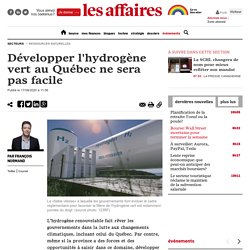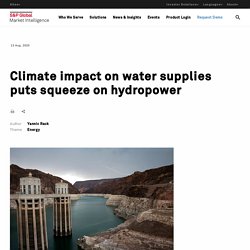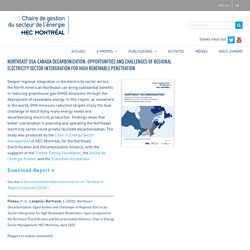Semaine du 14 septembre
> Chantalmern
Développer l'hydrogène vert au Québec ne sera pas facile. La «faible vitesse» à laquelle les gouvernements font évoluer le cadre réglementaire pour favoriser la filière de l’hydrogène vert est notamment pointée du doigt.

(source photo: 123RF) L’hydrogène renouvelable fait rêver les gouvernements dans la lutte aux changements climatiques, incluant celui du Québec. Par contre, même si la province a des forces et des opportunités à saisir dans ce domaine, développer cette source d’énergie représente tout un défi étant donné la présence de nombreuses faiblesses et menaces. Voilà l’un des constats importants qui ressort d’une étude sur le potentiel de l’hydrogène au Québec publiée le 19 août par Transition énergétique Québec, une société d’État dont la mission est de soutenir, de stimuler et de promouvoir la transition, l’innovation et l’efficacité énergétiques.
Les forces Le Québec présente plusieurs forces, à commencer par le dynamisme des acteurs de l’écosystème, incluant l’allemande Hy2Gen et la française Air liquide, deux producteurs d’hydrogène.
La Conférence Hydroélectricité Canada, événement phare de l’industrie hydroélectrique nationale. Pour l'AIE, sans un effort massif d'innovation, la transition énergétique ne peut pas réussir - Transitions & Energies. Climate impact on water supplies puts squeeze on hydropower. When Arild Tanem started working for Statkraft AS as a market analyst in 1995, he imagined little would change about the core commodity managed by Norway's state-owned power utility: the water stored behind its dams and flowing through the rivers that criss-cross the country and produce virtually all of its electricity.

Fast forward 25 years and Tanem oversees Statkraft's entire hydropower portfolio in the Nordics, close to 300 power plants that hold almost a quarter of Europe's entire reservoir capacity. Aside from his job title, Tanem has seen another marked change in the intervening years: Annual hydro generation in Norway has grown by more than 10% and continues to rise. "A small part of that are new power plants," Tanem, now the company's senior vice president of energy management, said in an interview. "But the main increase is climate change.
" Other types of power stations also face physical risks due to climate change. "The running water is basically our revenue.
Vue de L' hydroélectricité du Québec et les grandes régions productrices.
Northeast USA-Canada Decarbonization: Opportunities and Challenges of Regional Electricity Sector Intergration for High Renewable Penetration – Chaire de gestion du secteur de l'énergie. Deeper regional integration in the electricity sector across the North American Northeast can bring substantial benefits in reducing greenhouse gas (GHG) emissions through the deployment of renewable energy.

In this region, as elsewhere in the world, GHG emission reduction targets imply the dual challenge of electrifying many energy needs and decarbonizing electricity production. Findings show that better coordination in planning and operating the Northeast electricity sector could greatly facilitate decarbonization. The study was produced by the Chair in Energy Sector Management of HEC Montréal, for the Northeast Electrification and Decarbonization Alliance, with the suppport of the Trottier Family Foundation, the Insitut de l’énergie Trottier and the Transition Accelerator.
Download Report » See also A Decarbonized Northeast Electricity Sector: The Value of Regional Integration (2018) » Pineau, P. [Rapport en anglais seulement]
TFRR Final Report FR. F-cell+HFC: Scaling up to reduce costs and increase volumes. Hydrogen continues to take centre stage at the f-cell+HFC 2020 virtual event, as attendees are now participating in the second half of day one.

Production of hydrogen/decarbonisation was a focus of one of the afternoon sessions which was chaired by Aaron Hoskin from Natural Resources Canada. “We have a very strong session today and a pretty packed agenda,” he said welcoming attendees. First up on the virtual stage was Bertrand Masselot, President and CEO of Air Liquide Canada, who shared exactly what the industrial gas giant is up to in the hydrogen sector and how it plans to execute its ambitions plans for a decarbonised future. Present in Canada since 1911, Air Liquide has built up a very respectable reputation both in Canada and across the globe as it holds a vast experience in hydrogen production and is currently emersed in a variety of hydrogen markets. “Hydrogen is not new for Air Liquide,” he said.
“Our next project that I would like to present to you is Bécancour.
Swedish consortium unveils mammoth wind-powered car carrier. The technologies shaping the energy transition.




